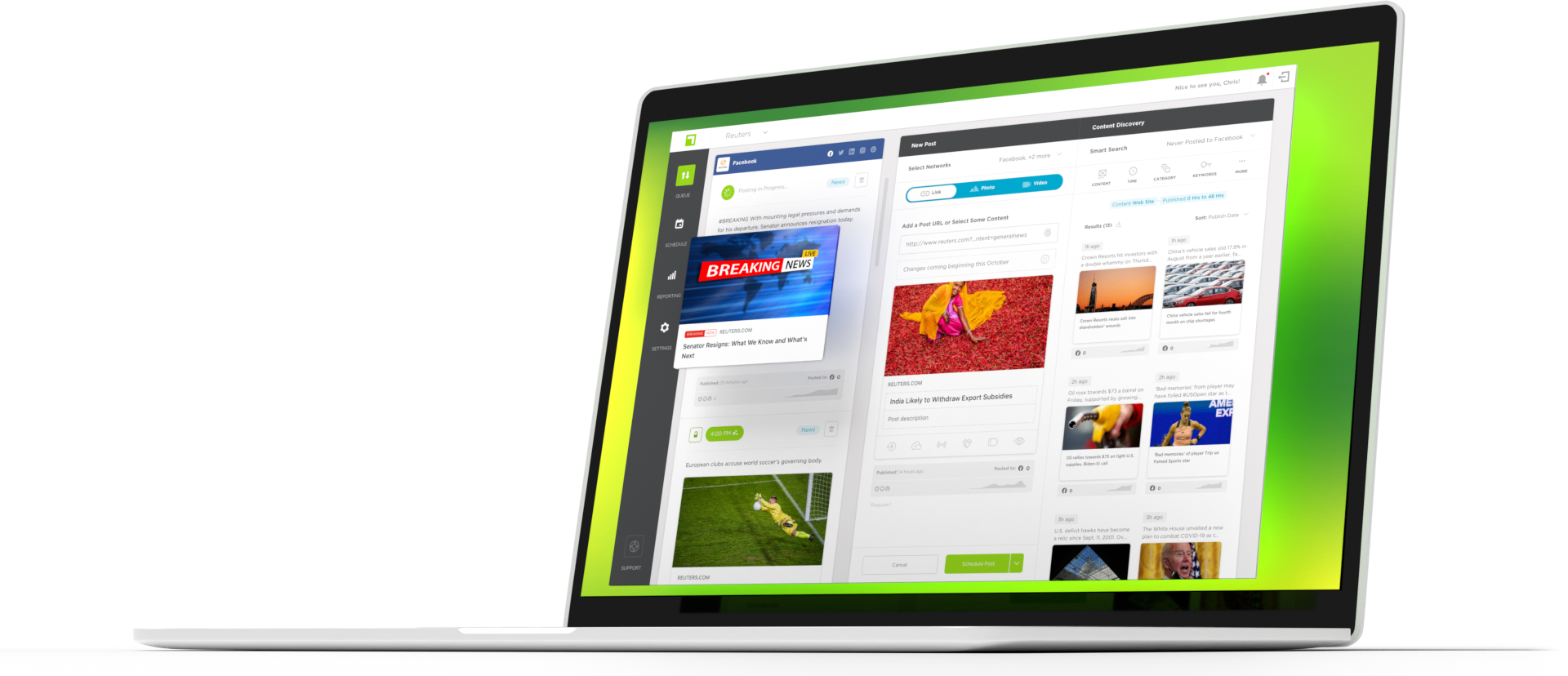Journalism and social media have become inextricably linked. From trolling Twitter for breaking information to tracking down sources and everything in between, using social media is an important part of the journalism landscape. The truth is that social media skills for journalists are no longer negotiable: They are a must.
But what social media platforms do you need? How should you use them? And how do you set professional boundaries? Let’s dive in.
Social media for information gathering
This is probably one of the most critical journalistic applications for social media, and the tactics will vary wildly depending on what you’re looking for and which platform you’re using. However, so many use it ineffectively. The amount of information at your fingertips can transform how you create stories and generate content.
Social Listening
Social listening is a broad term that loosely means consuming information on social platforms. This can encompass:
- tracking hashtags
- gauging user sentiment
- keeping track of the competition
- following stories
- watching breaking news
Basically, social listening applies any time you consume—or listen—to what people are saying instead of trying to be heard.
All of these make gathering information, finding sources, identifying leads, and gauging public sentiment much more available than before.
Storytelling with multimedia content
Social media has become an excellent medium for storytelling in the digital age, with different forms of media. Unlike press, radio, or even television, social media allows journalists to tell their stories in a variety of ways to capture their audience.
Journalists can use a mix of short-form videos, images, carousel posts, and a variety of other forms to tell their stories. Each platform has specific tools it likes to promote and formats you can implement into your marketing strategy to enhance your content.
Audience building
So now that you have your information and you’ve created a story, how do you get it out there? The truth is that people no longer go looking for information—they wait for information to come to them.
But building an audience is hard and exhausting, and it’s a fickle and complicated process. So what do you do?
Twitter is a great way to reach a lot of people quickly and piggyback on trending conversations. If you have a chance to be at the center of a breaking story, you’ll want to use this platform to the fullest.
- engage with key accounts
- use appropriate hashtags
- include trending terms
- be consistent and present (you cannot Tweet too much)
- Humor and wit are your friends here
Instagram is a great tool for many things. Reels and Stories give you a chance to provide a peek behind the scenes and let people become familiar with your brand, your personality, and your work on a regular basis. It’s a more visual platform than Twitter, and the engagement is higher overall, which means you can connect with people on a more personal level.
- show behind the scenes content
- be authentic and personable
- make sure your visuals are on point—sloppy images are a no here
- utilize links in your stories to drive traffic
Facebook is still a huge traffic driver and has the largest active user base. It’s important for brands to maintain a presence on the platform and share a variety of content—images, videos, links, and Stories are all relevant to the Facebook audience.
- provide a variety of content types
- be sure to post consistently
- provide a call to action
- use the comments section by dropping links and asking questions
TikTok
TikTok can be incredibly effective if you choose a niche to follow. If you’re in meteorology, food, or politics—you can easily weave a story with your content through short-form video. It doesn’t have to be dancing and silliness! You can answer user questions, tell stories, and share unique insights. Add value!
- engage with your audience by answering questions
- create high-quality video with good lighting
- post consistently
- find a niche
Cross-platform content
The beauty of this is that you can package content for several platforms. A 500-word article could potentially be a link post on Facebook, an image post on Instagram, and a series of Stories on Facebook that can be reposted to TikTok.
Finding ways to repackage your content appropriately for each platform seamlessly will make your life much easier and help you reach your audience across all your chosen platforms.
Industry trends and updates
Journalists who want to establish themselves as a leader in their niche can use social media to stay on top of industry trends. Following organizations, prominent influencers, and associations is a great way to spot changes you should be aware of. Finding success online is about adapting, staying relevant, and continuously learning, all of which social media can help you do.
Networking and collaborating
Finally, social media platforms are a great way for journalists to network and collaborate with like-minded professionals. This is, after all, why social media was started, and it is a feature all platform algorithms continue to promote.
Social media can be a great way to enhance ideas, spark creativity, and access career opportunities you may not have through the traditional job search. You can start by networking to find fellow journalists or potential collaboration partners through social media groups, communities, and online events in your niche. Take advantage and explore your space.
What now?
So you’ve figured out how to leverage social media to gather your information, AND you’ve figured out how to build an audience around your content. How on earth do you keep up with getting everything where it needs to go?
This is where True Anthem comes in. You may have mastered social media skills for journalists, but there’s not enough time to do it all well. Let our AI software manage your day-to-day posting so you can do the heavy lifting. Focus on listening, creating, and engaging.
We’ll handle the rest. Set up a demo now.

